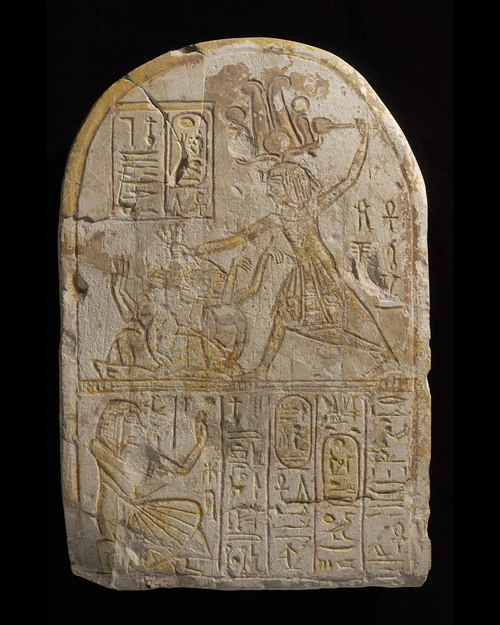
© 2005 Musée du Louvre / Christian Décamps
Deir al-Medina, from the khenu of Ramsses II
New Kingdom, 19th dynasty, reign of Ramsses II
Limestone
H.: 30.6 cm; W.: 20.5 cm; D.: 4.5 cm
Department of Egyptian Antiquities, Musée du Louvre
(E 16373)
Images of the pharaoh slaughtering his enemies were fairly common. Conventionally found on the vast walls of temple pylons during the New Kingdom, here we see one on the upper register of a small private stele.
King Ramesses II is shown victorious, wearing a composite crown, a wide collar, and an asymmetrical loin cloth. His left hand, raised above his head, holds a club that he is about to bring down on enemies whose hair he clutches in his other hand. The defeated adversaries, kneeling in a jumble, beg for mercy by raising imploring hands. The taut, dynamic pose of the king contrasts with the squatting clutter of his enemies on the ground. In the lower part of the stele, a kneeling scribe named Rames announces his adoration of his king, for which he hopes in return “a perfect life in the Place of Truth.”
This item testifies to an important aspect of common beliefs: monuments of this type convey a highly personal religious practice, not requiring contact with the cult statue reserved for priests. The ordinary believer simply beseeched the main religious image that was always on view, being outside the temple. Not merely a reassuring picture of the pharaoh vanquishing Egypt’s enemies, it is above all a symbol of the presence of the god himself.